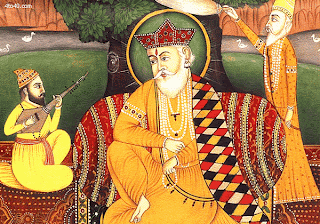The ancient Indian history as taught today to our youth is mostly based on a number of distortions and mis-dated chronology that Kosla Vepa, director of the prestigious Indic Studies Foundation based in US, says “were deliberately engineered to create confusion and inferiority complex among Indians” by the British Raj’s pseudo-historians of 19th century.
It is time for us Indians to reclaim our history from the clutches of people of another race — who have no stake in our civilisation — and set right these malicious distortions. Prof. B.B. Lal (former DG, ASI) in his paper at the International Conference on Indian History, Civilisation and Geopolitics to be held from January 9 at New Delhi, has given several examples of these distortions in Indian history.
I quote from his paper and bring to you the Deliberate Distortion Number One engineered by that infamous rogue Max Mueller that is still haunting us Indians today:
Way back in the 19th century, the renowned German scholar Max Muller dated the Vedas to circa 1200 BCE. This he did on a very ad-hoc basis. Having accepted that the Sµutra literature could be as old as the sixth century BCE, he assigned a duration of two hundred years to each of the preceding periods, namely those of the Araynakas, Brahmanas and Vedas. Thus, 600+200+200+200= 1200 BCE was his ready-made date for the Vedas.
However, when his contemporary scholars, such as Goldstucker, Whitney and Wilson raised objections to this kind of ad-hocism, he relented and came out with the following statement:“I have repeatedly dwelt on the merely hypothetical character of the dates, which I have ventured to assign to the first periods of Vedic literature. All I have claimed for them has been that they are minimum dates, and that the literary productions of each period which either still exist or which formerly existed could hardly be accounted for within shorter limits of time than those suggested.”But when even this explanation-cum-apology did not satisfy the scholars, Max Muller threw up his hands in sheer desperation. His confession, as follows, is worth noting (Max Muller 1890, reprint 1979):“If now we ask how we can fix the dates of these periods, it is quite clear that we cannot hope to fix a terminum a qua [sic]. Whether the Vedic hymns were composed [in] 1000 or 1500 or 2000 or 3000 BC, no power on earth will ever determine.”In so far as Max Muller was concerned, the matter was closed from his side. But the greatest irony is that his original fatawa of 1200 BCE, given in the 19th century, is sill ruling the roost in certain quarters even in the 21st century!The disastrous effect of this fatawa was seen in the 1920s when the Harappan Civilization was discovered and attempts were made to identify its authors. On the basis of the occurrence of several objects of this civilization in deposits of certain already-dated West Asian cultures, it was assigned to the 3rd millennium BCE.The net result was that the Vedic people were never even considered to have been the authors of the Harappan Civilization, since according to Max Muller.s fatawa the Vedas were only as old 1200 BCE. Simultaneously, without any sustainable reason the authorship was thrust on the Dravidian-speaking people. And this is how the first major distortion took place in interpreting ancient Indian history!
What kind of a “historian” was Max Muller? How can a historian make wild guesses without any basis and circulate his day-dreaming into public discourse, fully knowing that regardless of how absurd they are, his words will carry the weight of his name behind them and be taken seriously by people who don’t know any better? This is exactly what happened.
Was it necessary for Muller to circulate these dates about the Vedas and other literature to others when he himself admitted that no power on earth could determine when these holy books actually got written, “whether in 1000 or 1500 or 2000 or 3000 BC”? It is a crying shame that this date of 1200 BC as origin of the Vedas pulled by Mueller out of his hat is still being taught to Indian school children as a “fact.”
Does anyone in India even know how Muller arrived at this date? He decided that Sutras may not have been written any later than 600 BC (even this date has no basis in fact) and then on a whim he gave a nice packet of 200 years to each sacred literature — namely, Aranyakas, Brahmanas and Vedas — to develop and grow, totalled up the figures and, low and behold, he had 1200 BC as the date of origin of Vedas! Is this some kind of a joke? On top of that, he was fundamentalist in his Biblical belief that nothing in this world could be older than 4000 BC because that is when God created the universe! He wanted to give about 2000 years for the world and human race to evolve since the Creation and thus 2000 BC was his cut-off limit for antiquity of anything.
This is nothing but a criminal act of robbing Indian civilisation of its antiquity. Today, any historian who plays tricks like Mueller did with his dating of the Vedas will be declared a clown and get laughed out of the town by his peers. From dating of the Vedas to his equally absurd theory of Aryan race and Aryan invasion, there is no other “historian” who has spread more rumours about Indian history than this lout.









